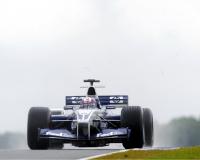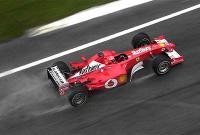

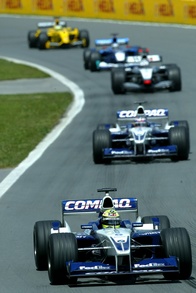

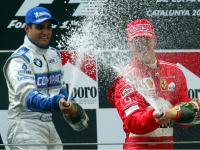
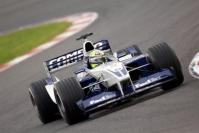



"The first priority is aero, the second priority is aero, the third priority is aero, the fourth priority is tyres... And everything in between them is to get those two components to work. The way I normally put it is the car we design is a bracket to take around the aero surfaces so they do the best possible job on the track".
- Sergio Rinland, Formula One racecar designerAerodynamics are central to a modern racecar design, and NEWPAN has the proven ability to give you the edge... Every F1 World Champion since Nigel Mansell has benefitted from aerodynamics developed with the help of NEWPAN.
Flow Solutions and its personnel have approaching 15 years experience of the application of panel methods to racecar design. Chris Burkett, one of the Company principals, was himself a Formula One aerodynamicist in the late 1980's and, with Adrian Newey, then at March-Leyton House, became interested in the application of CFD, most especially to facilitate the design of front and rear wings. Reliance upon scale model wind tunnel testing alone was clearly inadequate for the understanding and optimisation of an aerodynamic problem as complex as high downforce multi-element wing assemblies.
NEWPAN thus has a strong racing pedigree and has become the dominant panel method aerodynamic software in Formula One (often complemented by Navier-Stokes solvers). Every wing profile fitted to the cars of a leading F1 Championship contender since 1992 has been designed using NEWPAN (netting ? world championships).
Customised to the Needs of the Racecar AerodynamicistThe "car" version of NEWPAN, whilst sharing its core with the aerospace version, provides the racecar designer with a customised interface. Complete ride height maps can be generated in a single run, from geometry dimensioned to the `O'-line. In other words - leave the configuration in your usual CAD coordinate system and when running NEWPAN simply specify the required series of front and rear ride heights. Front and rear axle pitch rates may also be specified; these model the effects of instaneous incidence changes seen by the car as it bounces along a bumpy track.
Contemporary F1 geometries have been used to ensure satisfactory modelling techniques in every area of the car, for instance radiator and engine inlet modelling. Careful application of wake relaxation and Trefftz plane analysis methods have ensured accurate and converged solutions for lift and induced drag on complex high-lift assemblies such as rear wings. NEWPAN has been successfully validated against full scale Formula One test data.
The speed and ease of use of NEWPAN means that, for the first time, the aerodynamic analysis of an entire racecar is not only viable, but has become a routine part of the design process. With our background, and continual feedback and method development in partnership with the top Formula One teams, we have been able to develop the features necessary to make this a reality.
Some examples of these unique features are given here:NEWPAN is supplied with its own fully-featured pre- and post- processors, GEMS and VIEWPAN. These enable seamless integration with the design office CAD system, for the import of original surface definitions, and the export of the new redesigned surfaces following a NEWPAN design study.

